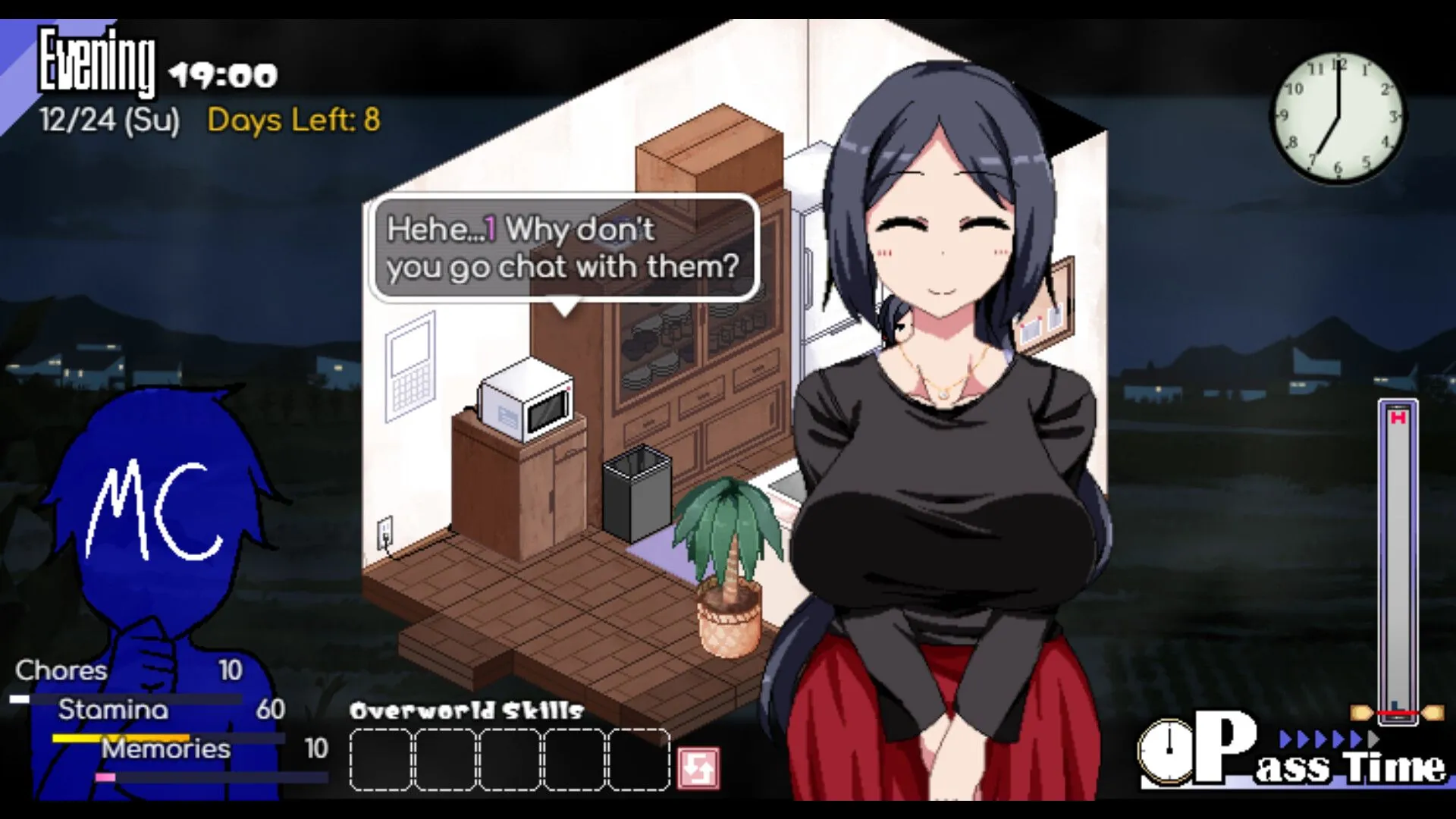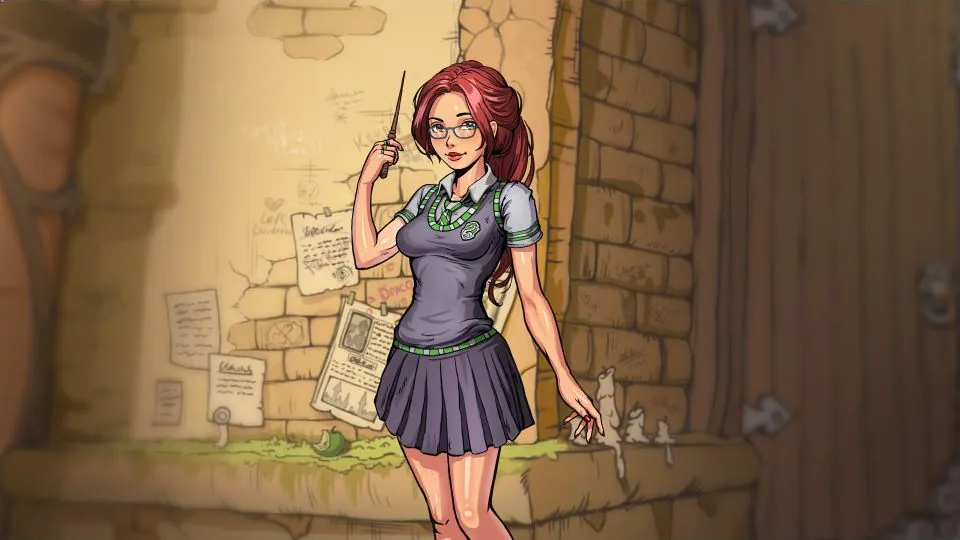
Long Story Short
Play Long Story Short
Long Story Short review
Exploring the Unique Features and Gameplay of Long Story Short
Long Story Short is an intriguing adult visual novel game that blends humor, narrative depth, and player choice to create a memorable experience. Centered on a young man who ventures beyond his computer screen, this game invites players to explore a world of relationships, choices, and unexpected twists. In this article, we dive into what makes Long Story Short a unique title in its genre, highlighting its storytelling style, gameplay mechanics, and character development to give you a comprehensive overview.
Exploring the Story and Narrative Style of Long Story Short
What is the Core Plot of Long Story Short?
Let me paint you a picture. You’re sitting in a dimly lit room, staring at a computer screen where a mysterious stranger is asking you deeply personal questions. At the same time, you’re mentally reliving your awkward, cringe-worthy high school years. 🕰️💻 This is the brilliant, gut-punching setup of the Long Story Short game story. The core plot follows a protagonist who is simultaneously navigating two pivotal moments in their life: conversations in a present-day anonymous chat room and the formative, often painful, experiences of their past in high school.
I remember my first playthrough; I was immediately hooked by the sheer relatability of it all. The Long Story Short narrative isn’t about saving the world from aliens—it’s about saving yourself from your own memories and regrets. The central mystery is the identity of the person on the other side of the screen. Who are they? What is their connection to your past? And why are they pushing you to revisit these specific moments? The game masterfully uses this dual-pressure cooker to explore themes of identity, friendship, regret, and the person you’ve become versus the person you thought you’d be. It’s a deeply personal journey that had me questioning my own life choices by the end. 😅
The beauty of the Long Story Short game story is its focus on the mundane made monumental. A forgotten conversation in a hallway, a party you didn’t go to, a friendship that fizzled out—these are the building blocks of a plot that feels incredibly authentic and emotionally resonant. You’re not just watching a story unfold; you’re actively digging through the protagonist’s memory, piece by piece, to understand how the past has led them to this exact moment in the chat room.
How Does the Game Use Multiple Timelines?
If you think juggling your schedule is hard, try juggling two timelines of your life at once! 🤹♀️ The Long Story Short multiple timelines mechanic is the engine that drives the entire experience. It’s not just a flashback feature; it’s the core of the gameplay and the narrative structure. You are constantly switching between the present-day chat interface and interactive scenes from your high school years.
Here’s how it worked for me: I’d be in the chat, and the anonymous user would ask something like, “Do you remember the first time you felt truly betrayed?” And BAM—the game would thrust me back into a specific high school scenario where I had to navigate that exact situation. The choices I made in the past directly influenced the dialogue options and emotional tone available to me in the present. It’s a constant, dynamic feedback loop.
This structure is genius for a few reasons:
* It creates immediate stakes: Your past actions aren’t just history; they have direct, real-time consequences on a conversation happening right now.
* It fosters deep introspection: You’re forced to see the direct line between a decision you made years ago and the person you are today.
* It unveils the plot gradually: The Long Story Short multiple timelines act like a puzzle. You get pieces from the past and the present, and it’s up to you to fit them together to see the whole picture. The “aha!” moments when connections click are incredibly satisfying. 🧩
Pro Tip: Pay close attention to the tone and wording in the chat. It often hints at which memory you need to re-examine or which past decision is currently influencing the conversation.
This isn’t a gimmick; it’s a fundamental part of understanding the Long Story Short narrative. The game argues that we are never just in the present; we are always a culmination of our past selves, and this mechanic makes you feel that weight in a very tangible way.
What Role Do Player Choices Play in the Story?
Okay, let’s talk about the part where you actually matter. In so many games, your “choices” are an illusion. Not here. Long Story Short player choices are the very fabric of the experience. They are not about picking a “good” or “evil” path; they are about defining a personality, mending (or breaking) relationships, and ultimately, determining which truth you uncover.
Every dialogue option, every action you take in a memory, and even your tone in the chat room sends ripples through both timelines. I learned this the hard way. In one playthrough, I chose to be sarcastic and defensive in the chat. This, in turn, locked me out of more vulnerable, introspective options and steered the Long Story Short narrative toward a much more confrontational and bitter conclusion. It was a powerful lesson: how you choose to communicate now is shaped by how you handled things then.
The impact of Long Story Short player choices is most evident in two key areas:
- Relationship Building: Your interactions with side characters in your high school memories will determine the strength and nature of your relationships. A kindness shown one day might become a crucial support system later. A thoughtless comment could close a door forever.
- The Final Revelation: The entire mystery of the chat room partner’s identity is unlocked based on your cumulative choices. The game features several distinct Long Story Short endings, each providing a different answer to the central question and a unique perspective on the protagonist’s journey.
The Long Story Short character development is almost entirely in your hands. The protagonist isn’t a fixed personality; they are a canvas that you paint with your decisions. Do they learn from their mistakes? Do they cling to old grudges? Do they grow into a more self-aware person? It’s all up to you. This makes the Long Story Short plot twists feel earned, because they are a direct result of the story you crafted. When a big reveal happened in my game, it didn’t feel like a scripted event—it felt like the logical, and sometimes heartbreaking, conclusion to the path I had chosen. 😮
To give you a clearer picture of how your decisions branch out, here’s a breakdown of some major story arcs and their potential conclusions:
| Central Relationship / Theme | Key Player Choice Examples | Potential Impact on Endings |
|---|---|---|
| Friendship with Alex | Standing up for them vs. Staying silent; Sharing a secret vs. Keeping distance | Determines if they become a lifelong confidant or a source of unresolved regret; Can influence the final chat partner’s identity. |
| Dealing with Academic Pressure | Cheating on a test vs. Accepting a poor grade; Prioritizing studies vs. Social life | Shapes the protagonist’s self-perception of integrity and success; Affects future career mentions in the chat. |
| Confronting Personal Insecurities | Admitting fear vs. Projecting false confidence; Seeking help vs. Isolating oneself | Leads to a conclusion of self-acceptance and growth or one of continued internal conflict and loneliness. |
| The “Incident” at the Party | Taking responsibility vs. Blaming others; Reaching out after vs. Cutting ties | This is often a pivotal moment that defines several relationships and is a core topic in the final chat revelations. |
Ultimately, the magic of Long Story Short is that it understands life is rarely about one big, defining choice. It’s about thousands of little ones. The Long Story Short player choices mirror this beautifully, making you the author of a deeply personal, and often surprising, Long Story Short game story. The journey to uncover the various Long Story Short endings is a testament to how well the game integrates its mechanics with its heart, creating an experience that stays with you long after the final chat message is sent. ✨
Long Story Short offers a compelling blend of humor, narrative depth, and meaningful player choices that create a unique visual novel experience. Its dual timeline storytelling and multiple endings invite players to explore different facets of the protagonist’s life and relationships. Whether you enjoy engaging stories or interactive gameplay, this game provides a memorable journey worth exploring. Dive in and discover your own path through Long Story Short.





